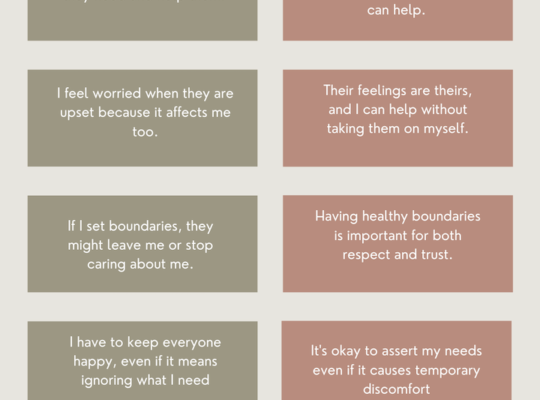In the complex world of human communication, conflicts can unexpectedly come up, pushing the connection in ways that might seem a bit surprising. Humans have a powerful need to connect with other human beings. Sometimes, when they are unable to connect, they express their true feelings through conflicts and arguments, which shows us a fascinating web of connected processes that build our social bonds. The current rise in mental health issues is connected to a shortage of meaningful human connections, underscoring the importance of authentic interactions for our well-being.
The Neurobiology of Communication:
At the heart of human communication lies a complex web of neural networks that influence how we express ourselves and interpret others. The brain, with its myriad of neurotransmitters and hormones, plays a pivotal role in shaping our emotional responses and social interactions.
One key player in this neural symphony is oxytocin, often dubbed the “love hormone” or “bonding hormone.” Oxytocin is released in response to social cues, promoting feelings of trust and empathy. However, the brain’s response to conflict is equally intriguing. The amygdala, a region associated with processing emotions, often takes center stage during conflicts, triggering the release of stress hormones like cortisol. Read my blog Human Connection: Neurobiology Behind it! for learning more about the biology of human connection.
Conflict as a Catalyst for Connection:

In seemingly contradictory fashion, conflicts can serve as a catalyst for deeper connections. When conflicts arise, the brain mobilizes resources to address the perceived threat. This heightened state of alertness can lead to increased communication, as individuals strive to understand and resolve the conflict.
In essence, conflicts can act as a signal for the brain to prioritize social bonds. While the stress response may be activated initially, the ultimate goal is to restore harmony within the group. This process often involves negotiation, compromise, and an increased level of communication to find common ground.
The Evolutionary Perspective

From an evolutionary standpoint, the inclination to navigate through conflicts is deeply ingrained in our species. Throughout human history, survival has been closely tied to the strength of social bonds and cooperation within groups. Conflicts, in this context, serve as a mechanism for addressing challenges and reinforcing social cohesion.
In simple terms, our ancestors faced external threats that required collective problem-solving. Engaging in conflicts allowed them to test and strengthen the bonds within the group, ensuring better chances of survival and success in the face of adversity.Throughout our evolution, making strong social bonds and wanting to connect has been really important for survival. When something traumatic happens, our natural urge to connect with others becomes even stronger as a way of dealing with it. This connection-seeking is like leaning on the strength and support of the community, which helps us overcome tough times. The close link between trauma and our deep-seated need for social connection shows how much we rely on emotional support and being part of a community.
Non-Verbal Communication:
Beyond the intricacies of brain chemistry and evolutionary history, the art of non-verbal communication also plays a vital role in our interactions. Conflicts often elicit a range of non-verbal cues, from facial expressions to body language, that convey emotions and intentions.
In many cases, these non-verbal signals can speak louder than words, providing a nuanced layer to our communication. Conflicts become a medium through which individuals express their true feelings, even when verbal communication may be guarded or restrained. My article on Neurobiology of Human Connection explains non verbal communication in depth.
Conclusion:
Conflicts emerge as an unexpected thread that weaves through the fabric of social interaction. From a scientific and biological perspective, understanding the role of conflicts reveals the intricate dance of neurotransmitters, the evolutionary roots of our behavior, and the silent language of non-verbal communication.
Rather than viewing conflicts as barriers to connection, we can recognize them as opportunities for growth, understanding, and ultimately, stronger social bonds. By embracing the complexities of our biological and evolutionary heritage, we gain insights into the profound ways in which conflicts contribute to the richness of human communication.







[…] Our ability to imitate and synchronize with others, thanks to the mirror neuron system (MNS), contributes to emotional intelligence. This evolution from social intelligence allows us to understand and predict the actions and intentions of our peers, fostering social bonds. Super-cooperation, a result of direct and indirect reciprocity, network reciprocity, and kin selection reciprocity, becomes a driving force in our achievements. These specialized cells fire not only when an individual performs an action but also when they observe someone else performing the same action. This phenomenon enables us to empathize with others by mirroring their emotions, intentions, and even physical sensations. It forms the foundation of social cognition and allows us to understand and relate to the experiences of those around us. Its interesting when humans are unable to communicate, they tend to engage themselves in arguments or conflicts. […]
omnis soluta corrupti autem enim aliquid minima quas. odio sed rerum quia neque quisquam. inventore ab earum porro et. facere id ut quia suscipit accusamus aut ut fugit numquam ut.
praesentium reiciendis cum qui rerum quos distinctio provident ea incidunt in quod consequatur quasi modi qui. et odio temporibus aperiam et dignissimos veniam dolores repudiandae voluptatum in corpor
sapiente magnam porro incidunt quas et accusamus ad ut itaque ut quo rerum qui necessitatibus rem ut delectus. cupiditate voluptatem totam sint voluptatem iusto et doloribus. rerum sed et reiciendis p
quod laborum commodi fugiat quasi a nesciunt magnam. qui ad sapiente porro quia beatae et. sint ut occaecati a quidem ratione cupiditate qui. quia vitae sed dignissimos dolore aut et quas ea velit vol
Ny weekly Awesome! Its genuinely remarkable post, I have got much clear idea regarding from this post . Ny weekly
Simply Sseven naturally like your web site however you need to take a look at the spelling on several of your posts. A number of them are rife with spelling problems and I find it very bothersome to tell the truth on the other hand I will surely come again again.